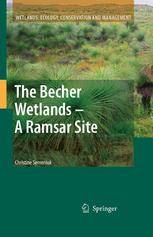

Most ebook files are in PDF format, so you can easily read them using various software such as Foxit Reader or directly on the Google Chrome browser.
Some ebook files are released by publishers in other formats such as .awz, .mobi, .epub, .fb2, etc. You may need to install specific software to read these formats on mobile/PC, such as Calibre.
Please read the tutorial at this link: https://ebookbell.com/faq
We offer FREE conversion to the popular formats you request; however, this may take some time. Therefore, right after payment, please email us, and we will try to provide the service as quickly as possible.
For some exceptional file formats or broken links (if any), please refrain from opening any disputes. Instead, email us first, and we will try to assist within a maximum of 6 hours.
EbookBell Team

4.1
90 reviewsThis book is a landmark study of the Holocene evolution and functioning of a suite of seasonal wetland basins in the temperate coastal zone of Western Australia. In 2001, a series of discrete small scale wetlands on the Becher cuspate foreland in Western Australia, were nominated as a Ramsar site because of their scientific values. These values pertained to their setting, their method of formation and deepening, their history of infilling, their complex hydrological mechanisms, and their dynamic hydrochemical and vegetation responses. The wetlands were the subjects of intense curiosity, observation, measurement, and experiment, for over 10 years. The results of this interest and passion are presented here in order to demonstrate the considerable importance of what lay beneath the ordinary surface.
Amongst the new ideas presented in the book are the importance of stratigraphy in understanding wetland development, the significance of physiographic setting in determining wetland development, and the unravelling of several different evolutionary pathways in wetlands of the same basic origin.
The book would be of interest to a great variety of readers such as university researchers/students in the fields of geography, ecology, environmental science/engineering, botany and biology, and also would be of benefit to water/soil resource managers, land management planners, conservation agencies and environmental management/protection agencies.